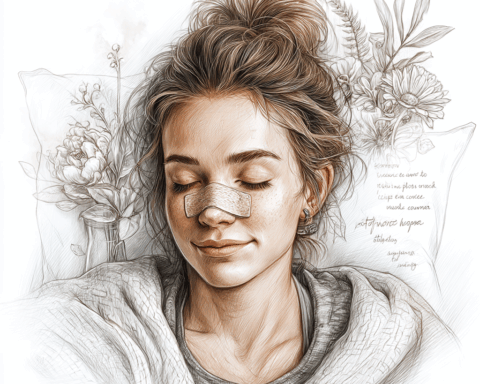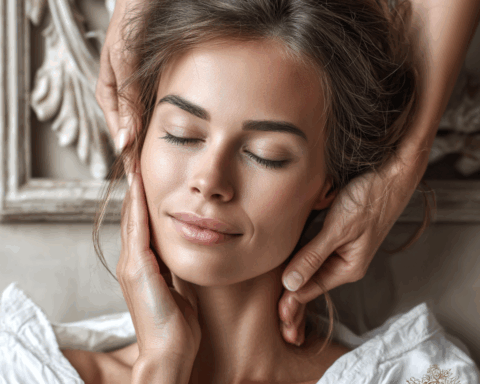Rehabilitation After Closed Rhinoplasty: The Key to a Successful Outcome
Every woman considering closed rhinoplasty knows: rehabilitation after closed rhinoplasty is an important stage that requires attention, patience, and proper care. In this process, the final result largely depends on how accurately the doctor’s recommendations are followed. In this article, we will thoroughly uncover all aspects of recovery after the surgery, including tips on nutrition, physical activity, and nose care.
Stages of Recovery After Closed Rhinoplasty
Rehabilitation after closed rhinoplasty usually takes from 6 to 12 months, but the main changes occur in the first 1-2 months. Despite the duration of the rehabilitation period, the first few days have the most significant impact on the overall recovery.
First 24 Hours After Surgery
In the first 24 hours after surgery, the patient is under medical supervision, and this stage may be accompanied by some discomfort. You may feel drowsiness and weakness due to anesthesia, as well as minor pain in the nose area. Breathing through the nose may be difficult due to swelling and the use of packing. Small bruises may also appear around the eyes.
During this time, proper self-care is essential. It is recommended to sleep with your head elevated, which will help reduce swelling. Take care of yourself, listen to the doctors’ recommendations, and do not hesitate to reach out to them for help.
The First Week
This week is considered the most challenging in the rehabilitation process after closed rhinoplasty. Swelling persists, bruising becomes more noticeable, and there may be slight nasal discharge. A cast or splint remains on the nose, which limits your activities and can be uncomfortable.
Here, it is especially important to follow all of the surgeon’s directives. Sleep only on your back with your head elevated, avoid bending your head, and refrain from physical exertion. Do not take hot baths, and keep an eye on the condition of your stitches. Usually, stitches are removed and packing is taken out around the 5th to 7th day, which brings relief.
Weeks 2-4
At this stage of rehabilitation, recovery after closed rhinoplasty continues with noticeable improvements. Swelling gradually decreases, bruises dissolve, and breathing through the nose is restored. The cast or splint is usually removed after 7-10 days, allowing many patients to return to work, though physical activity remains limited.
While you can start returning to your normal activities, pay attention to your condition. Avoid sun exposure, do not wear glasses, and limit the use of makeup. All of this will help in your recovery.
Months 1-3
At this stage, the swelling completely subsides, and you can gradually return to sports. It is important to remember that full tissue recovery and the formation of the final result will take a few more months. Enjoy the improvements and be patient.
Nose Care After Closed Rhinoplasty
Proper nose care during rehabilitation after closed rhinoplasty is extremely important for achieving the desired result. It is essential not to overlook nasal cavity hygiene. In the first days after surgery, crusts and mucus may form that require careful removal. Use saline solutions for nasal irrigation and antiseptic sprays for moisture.
Wound Care and Use of Cold Compresses
If external stitches were placed during the surgery, treat them with antiseptic solutions several times a day. Cold compresses applied to the area around the eyes and bridge of the nose can help reduce swelling and decrease the risk of bruises. This simple yet effective solution works wonders!
Sun Protection
Don’t forget about sun protection. For 2-3 months after closed rhinoplasty, try to avoid direct sunlight to prevent hyperpigmentation (darkening) of scars. Use a high-SPF sunscreen and a hat. This will create comfortable conditions for your body during recovery.
Nutrition After Closed Rhinoplasty
Proper nutrition plays a key role in the recovery process. In the first days after surgery, try to eat light, semi-liquid food and avoid hot drinks. It is important to remember that your diet should be rich in protein and vitamins to promote tissue healing.
Include lean meats, fish, dairy products, fresh vegetables, and fruits—especially those rich in vitamin C—into your menu. Avoid salty and hard foods that require active chewing. These simple recommendations can significantly impact your recovery.
Physical Activity During Rehabilitation
Correct physical activity is also vital for rehabilitation after closed rhinoplasty. In the first two weeks, it is recommended to limit any physical exertion. Only light walking around the house is permitted. As time goes on, you can gradually increase your activity, but you should avoid heavy workouts and sports competitions until your nose has fully healed.
Facial Skin Care
Don’t forget about proper facial skin care during the recovery period. For the first two weeks, avoid using makeup and don’t touch the nose area. After this period, you can safely switch to light moisturizing creams and minimal makeup. Proper skin care will help you recover faster and improve your appearance.
Possible Complications and Their Prevention
Although closed rhinoplasty is considered a relatively safe procedure, complications can arise during the rehabilitation period. These include bleeding, infections, nasal asymmetry, and others. To minimize risks, follow all of the surgeon’s recommendations and pay attention to your condition.
Psychological Aspects of Rehabilitation
Remember that rehabilitation is not just a physical but also a psychological process. Many women experience anxiety and stress while awaiting the results of their surgery. Stay in touch with your surgeon, keep a recovery journal, and communicate with others who have undergone similar experiences. This will help you cope with negative emotions and focus on the positive changes.
Conclusion
In conclusion, rehabilitation after closed rhinoplasty is an essential stage that determines the success of your surgery. By following the recommendations on care, nutrition, and physical activity, you will be able to navigate the path to your new appearance with minimal difficulties.
Remember that full recovery will take from 6 to 12 months, and the key is to be patient. Proper care for your nose and facial skin, along with attention to your psychological state, can significantly influence the outcome. Every case is unique, and it is important to follow your surgeon’s personalized recommendations to achieve the best results and enjoy your new look.
Do you want to keep up to date with the latest news about plastic surgery? Subscribe to my Telegram channel: https://t.me/By_Staisupov_ENG
Do you like to watch videos? More useful information is available here (the channel is in Russian, but you can always turn on auto-titles): https://www.youtube.com/@staisupov
All the results of plastic surgery can be found here: https://staisupov.ru/results







